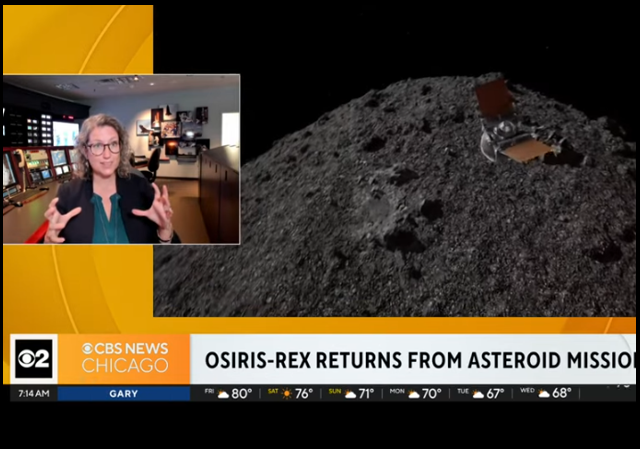Bennu Asteroid Sample Contains ‘Building Blocks of Life’

The last time we checked on the National Aeronautics and Space Agency (NASA) #OSIRISREx mission, the sample return capsule containing rock and dust collected in space from asteroid Bennu had finally landed on Earth for shipment to a temporary clean room in Utah.
NASA shared its long-awaited report on the samples collected from the asteroid, and the analysis showed the presence of the building blocks of life.
NASA Administrator Bill Nelson said it’s an exciting discovery, with the initial analysis of the material showing abundant carbon.”At nearly 5% carbon by weight, carbon being the central element of life, far exceeding our goals of 60 grams. This is the largest carbon-rich asteroid sample ever returned to Earth,” Nelson said. “First analysis shows samples that contain abundant water in the form of hydrated clay minerals, minerals and carbon.”…Dr. Dante Lauretta, OSIRIS-REx principal investigator, described the discovery as a “scientific treasure.””To see this dream coming true today is beyond words for me,” Lauretta said.He said under electron microscopes, fine details of the composition of the asteroid samples revealed water-bearing clay minerals with fibrous structure that have water locked inside their crystal surface.”These molecules landed on earth billions of years ago to make life possible,” Dr. Lauretta said.
The head of the sample analysis team described the find as an ‘astrobiologist’s dream”.
Daniel Glavin, OSIRIS-REx sample analysis lead, echoed Nelson’s statements regarding the discovery of carbon and noted he spent countless hours investigating whether asteroids like Bennu brought pre-biotic chemicals to Earth that triggered life.’We picked the right asteroid, and not only that we brought back the right sample, said Glavin.’This stuff is an astrobiologists dream, I just can’t wait to get at it.’
The samples also support the recent theories about how Earth’s water came to be on this planet.
“The first analysis shows samples that contain abundant water in the form of hydrated clay minerals, and they contain carbon as both minerals and organic molecules,” Nelson said.The team shared detailed images of the particles revealing the water-bearing clay minerals.“That is how we think water got to Earth,” said Lauretta, who is also a University of Arizona Regents Professor of Planetary Sciences. “The reason that Earth is a habitable world, that we have oceans and lakes and rivers and rain, is because these clay minerals landed on Earth 4 billion years ago to 4 and a half billion years ago, making our world habitable. So we’re seeing the way that water got incorporated into the solid material.”The analysis also revealed sulfide minerals, “a critical element for planetary evolution and biology,” iron oxide minerals called magnetite that react to magnetic fields, and other minerals that could be important for organic evolution, Lauretta said.
CLICK HERE FOR FULL VERSION OF THIS STORY